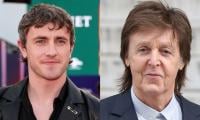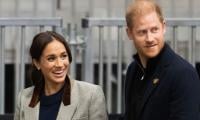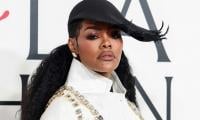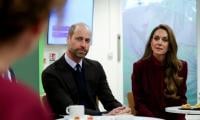Over 24 mayors served Karachi since 1933
By our correspondents
December 05, 2015
LAHORE: The fabulous metropolis of Karachi has so far had over two dozen illustrious mayors and Nazims during the last 82 years since November 1933, though a Municipal Committee was initially entrusted with the task to look after the then fishing town’s daily affairs in January 1885, some 15 years before India’s first tramway system was constructed here in 1900, or just two years before the Port was formally established here in 1887 and around seven years after the city was connected by a railway line to the rest of India in 1878.
Widely believed to be the first municipality to collect state revenues in the sub-continent, the Karachi Municipal Committee used to levy House Tax on private property owners and ensure its prompt collection too.
In 1910, a key Sindh Club functionary and an eminent British official, Sir Charles Mules, was elected the first President of the Karachi Municipal Committee for the year 1910-1911.
He was succeeded by Ghulam Ali Chagla, whose son Ahmed Ghulam Ali Chagla had gone on to compose the Pakistan’s National anthem in 1950, and a Parsi business tycoon Jamshed Nusserwanji Mehta, who had served as elected President of the municipality for about 20 years.
The Karachi City Municipal Act was promulgated in 1933. Initially, the Municipal Corporation was administrated by a Mayor and Deputy Mayor, who were assisted by 57 councilors.
The Mayor and Deputy Mayor had later replaced the President and Vice President of the municipality.
Here follows the list of Karachi Mayors and District Nazims:
The first elected Mayor of Karachi was Jamshed Nusserwanjee Mehta (1886-1952), whose family firm Messrs Nusserwanji & Co owned a retail shop at Saddar’s Elphinstone Street (now called Zaibunnisa Street), a salt factory, a tile factory, a flour mill, an ice factory and a large wholesale shop for home provisions and liquor.
Nusserwanjee, the father of Scouting in Sindh and one of the founder members of the Boy Scout Movement in India and post-partition Pakistan, had served as Karachi’s Mayor between November 1933 and August 1934.
Having pioneered the drive to beautify and remodel Karachi, he had ordered the daily washing of city roads and had laid the foundation stone of a Leprosy hospital near the Port City’s Manghopir locality.
Nusserwanjee was succeeded by Teakum Das Vadhumull (August 30, 1934, to May 3, 1935), the first-ever Muslim Mayor, patron of Karachi Children Society and one of the pivotal figures behind the establishment of Sindh Muslim College, Kazi Khuda Buksh (May 3, 1935 to May 9, 1936), Khan Bahadur Ardeshir Mama (May 9, 1936 to May 4, 1937), an eminent Hindu business magnate Durgadas Advani (May 4, 1937 to May 6, 1938), popular public figure and a key member of Karachi Muslim League Hatim Alvi (May 6, 1938 to May 5, 1939), renowned novelist Bapsi Sidhwa’s father-in-law R.K. Sidhwa (May 5, 1939 to May 7, 1940), respected philanthropist, eduicatyionist and an important character of Mahatma Gandhi’s historic “Non- Cooperation Movement” Lalji Mehrotra (May 7, 1940 to May 6, 1941), a member of the Bombay Legislative Council from Sindh constituency and a former Deputy Speaker of the then Sindh Assembly, Mohammad Hashim Gazdar (May 6, 1941 to May 8, 1942), Parsi historian and author, Sohrab K.H. Katrak (May 8, 1942 to May 11, 1943), Shambonath Mulraj (May 11, 1942 to May 10, 1943), Karachi’s imposing business magnate, politician and philanthropist, Yousuf Abdullah Haroon (May 10, 1943 to May 8, 1944), Karachi’s only Catholic Mayor and a former President of a social and sports club “The Goa-Portuguese Association” or the “Karachi Goan Association” Manuel Misquita (May 8, 1945, to May 1, 1946), Vishhramdas Devandas (May 9, 1946, to May 9, 1947), first post-partition Mayor, former Ambassador and a Provincial Minister of Sindh, Hakeem Mahommed Ahsan (May 9, 1947, to May 25, 1948), a scion of Khoja-Ismaeli family, poet, friend and biographer of Quaid-e-Azam Muhammad Ali Jinnah, Ghulam Ali Alana (May 25, 1948 to July 8, 1948), owner of Karachi’s Lea Market, Safoora Goth, Abdullah Gabol Goth, Chutta Khan Goth and Gadap localities and politician Nabeel Gabol’s grandfather, Khan Bahadur Allah Bakhsh Gabol (April 1951 to January 10, 1953), founder of the Habibullah Group of Companies that had stakes in coal mining, marble mining, chromite mining, fluorite mining, textile mills and sugar refineries, Khan Bahadur Hafiz Habibullah Piracha (1953—1954), former Sindh Governor Mahmood A. Haroon (January 19, 1954, to May 26, 1955), the man who had announced construction of a fountain near the Quaid-i-Azam’s mausoleum in 1965, Malik Bagh Ali (May 26, 1955, to May 29, 1956), Siddique Wahab (May 30, 1956, to December 14, 1956), S.M. Taufiq (June 14, 1958 to October 14, 1958), Allah Bakhsh Gabol (May 1961 to October 1962), former MNA, once a member of the Congress Party’s youth wing and the man who had spearheaded a campaign for the defunct Karachi Metropolitan Corporation’s right over motor-vehicle tax and property tax, late Abdul Sattar Afghani (two tenures between November 9, 1979 and February 12, 1987), Dr. Farooq Sattar (January 9, 1988, to July 27, 1992), Captain Fahim Zaman Khan (August 10, 1998, to July 29, 2000), Naimatullah Khan (August 14, 2001 to May 2005) and Syed Mustafa Kamal (October 17, 2005 to February 2010).
While Mayor Nusserwanjee Mehta had donated Rs 1,35,000 for the construction of the famous Mama Parsi Girls’ High School on Bunder Road (now M.A. Jinnah Road) in Karachi some 97 years ago in 1918, one of his successors, the Late Khan Bahadur Ardeshir Hormusji Mama, had donated Rs.3,00,000 for the same institution.
Soon after the First World War, Ardeshir Hormusji Mama had owned the place where the Palace Hotel and Sheraton Hotel had stood for years.
Messrs Allah Bakhsh Gabol and Abdul Sattar Afghani had both served as Karachi’s Mayors twice each.
According to a book “Karachi during the British Era: two histories of a modern city,” which was authored by Messrs Behram Rustomji and Sohrab Katrak, the population of Karachi was hardly 386,655 in 1941.
The residents of Karachi, 74 years ago, had included 180,199 Hindus; 162,447 Muslims; 17,466 Christians; 12,632 members of scheduled castes, some 5,835 Sikhs, 3,214 Jains, 3,700 Parsis, 1,051 Jews, around 75 Buddhists and 36 “others.”
However, the Karachi city government thinks Karachi’s population was 435,887 in 1941. According to demographic statistics compiled by the Karachi City government and the Government of Pakistan Census Reports, the urban population of this port city was 56,875 in 1856, 73,560 in 1881, 136,297 in 1901, 244,162 in 1921, 300,799 in 1931, 435,887 in 1941, 1,137,667 in 1951, 2,044,044 in 1961, 3,606,746 in 1972, 5,437,984 in 1981 and 9,802,134 (over 9.8 million) in 1998.
A quite recent October 2015 Asian Development Bank report had estimated that Karachi would be the seventh most populous city of the world by the year 2030, with a population soaring to 24.84 million.
The statistics had placed the current total population of the country’s largest metropolitan city at 16.62 million, hence making it the 12th most populous global city today.
Widely believed to be the first municipality to collect state revenues in the sub-continent, the Karachi Municipal Committee used to levy House Tax on private property owners and ensure its prompt collection too.
In 1910, a key Sindh Club functionary and an eminent British official, Sir Charles Mules, was elected the first President of the Karachi Municipal Committee for the year 1910-1911.
He was succeeded by Ghulam Ali Chagla, whose son Ahmed Ghulam Ali Chagla had gone on to compose the Pakistan’s National anthem in 1950, and a Parsi business tycoon Jamshed Nusserwanji Mehta, who had served as elected President of the municipality for about 20 years.
The Karachi City Municipal Act was promulgated in 1933. Initially, the Municipal Corporation was administrated by a Mayor and Deputy Mayor, who were assisted by 57 councilors.
The Mayor and Deputy Mayor had later replaced the President and Vice President of the municipality.
Here follows the list of Karachi Mayors and District Nazims:
The first elected Mayor of Karachi was Jamshed Nusserwanjee Mehta (1886-1952), whose family firm Messrs Nusserwanji & Co owned a retail shop at Saddar’s Elphinstone Street (now called Zaibunnisa Street), a salt factory, a tile factory, a flour mill, an ice factory and a large wholesale shop for home provisions and liquor.
Nusserwanjee, the father of Scouting in Sindh and one of the founder members of the Boy Scout Movement in India and post-partition Pakistan, had served as Karachi’s Mayor between November 1933 and August 1934.
Having pioneered the drive to beautify and remodel Karachi, he had ordered the daily washing of city roads and had laid the foundation stone of a Leprosy hospital near the Port City’s Manghopir locality.
Nusserwanjee was succeeded by Teakum Das Vadhumull (August 30, 1934, to May 3, 1935), the first-ever Muslim Mayor, patron of Karachi Children Society and one of the pivotal figures behind the establishment of Sindh Muslim College, Kazi Khuda Buksh (May 3, 1935 to May 9, 1936), Khan Bahadur Ardeshir Mama (May 9, 1936 to May 4, 1937), an eminent Hindu business magnate Durgadas Advani (May 4, 1937 to May 6, 1938), popular public figure and a key member of Karachi Muslim League Hatim Alvi (May 6, 1938 to May 5, 1939), renowned novelist Bapsi Sidhwa’s father-in-law R.K. Sidhwa (May 5, 1939 to May 7, 1940), respected philanthropist, eduicatyionist and an important character of Mahatma Gandhi’s historic “Non- Cooperation Movement” Lalji Mehrotra (May 7, 1940 to May 6, 1941), a member of the Bombay Legislative Council from Sindh constituency and a former Deputy Speaker of the then Sindh Assembly, Mohammad Hashim Gazdar (May 6, 1941 to May 8, 1942), Parsi historian and author, Sohrab K.H. Katrak (May 8, 1942 to May 11, 1943), Shambonath Mulraj (May 11, 1942 to May 10, 1943), Karachi’s imposing business magnate, politician and philanthropist, Yousuf Abdullah Haroon (May 10, 1943 to May 8, 1944), Karachi’s only Catholic Mayor and a former President of a social and sports club “The Goa-Portuguese Association” or the “Karachi Goan Association” Manuel Misquita (May 8, 1945, to May 1, 1946), Vishhramdas Devandas (May 9, 1946, to May 9, 1947), first post-partition Mayor, former Ambassador and a Provincial Minister of Sindh, Hakeem Mahommed Ahsan (May 9, 1947, to May 25, 1948), a scion of Khoja-Ismaeli family, poet, friend and biographer of Quaid-e-Azam Muhammad Ali Jinnah, Ghulam Ali Alana (May 25, 1948 to July 8, 1948), owner of Karachi’s Lea Market, Safoora Goth, Abdullah Gabol Goth, Chutta Khan Goth and Gadap localities and politician Nabeel Gabol’s grandfather, Khan Bahadur Allah Bakhsh Gabol (April 1951 to January 10, 1953), founder of the Habibullah Group of Companies that had stakes in coal mining, marble mining, chromite mining, fluorite mining, textile mills and sugar refineries, Khan Bahadur Hafiz Habibullah Piracha (1953—1954), former Sindh Governor Mahmood A. Haroon (January 19, 1954, to May 26, 1955), the man who had announced construction of a fountain near the Quaid-i-Azam’s mausoleum in 1965, Malik Bagh Ali (May 26, 1955, to May 29, 1956), Siddique Wahab (May 30, 1956, to December 14, 1956), S.M. Taufiq (June 14, 1958 to October 14, 1958), Allah Bakhsh Gabol (May 1961 to October 1962), former MNA, once a member of the Congress Party’s youth wing and the man who had spearheaded a campaign for the defunct Karachi Metropolitan Corporation’s right over motor-vehicle tax and property tax, late Abdul Sattar Afghani (two tenures between November 9, 1979 and February 12, 1987), Dr. Farooq Sattar (January 9, 1988, to July 27, 1992), Captain Fahim Zaman Khan (August 10, 1998, to July 29, 2000), Naimatullah Khan (August 14, 2001 to May 2005) and Syed Mustafa Kamal (October 17, 2005 to February 2010).
While Mayor Nusserwanjee Mehta had donated Rs 1,35,000 for the construction of the famous Mama Parsi Girls’ High School on Bunder Road (now M.A. Jinnah Road) in Karachi some 97 years ago in 1918, one of his successors, the Late Khan Bahadur Ardeshir Hormusji Mama, had donated Rs.3,00,000 for the same institution.
Soon after the First World War, Ardeshir Hormusji Mama had owned the place where the Palace Hotel and Sheraton Hotel had stood for years.
Messrs Allah Bakhsh Gabol and Abdul Sattar Afghani had both served as Karachi’s Mayors twice each.
According to a book “Karachi during the British Era: two histories of a modern city,” which was authored by Messrs Behram Rustomji and Sohrab Katrak, the population of Karachi was hardly 386,655 in 1941.
The residents of Karachi, 74 years ago, had included 180,199 Hindus; 162,447 Muslims; 17,466 Christians; 12,632 members of scheduled castes, some 5,835 Sikhs, 3,214 Jains, 3,700 Parsis, 1,051 Jews, around 75 Buddhists and 36 “others.”
However, the Karachi city government thinks Karachi’s population was 435,887 in 1941. According to demographic statistics compiled by the Karachi City government and the Government of Pakistan Census Reports, the urban population of this port city was 56,875 in 1856, 73,560 in 1881, 136,297 in 1901, 244,162 in 1921, 300,799 in 1931, 435,887 in 1941, 1,137,667 in 1951, 2,044,044 in 1961, 3,606,746 in 1972, 5,437,984 in 1981 and 9,802,134 (over 9.8 million) in 1998.
A quite recent October 2015 Asian Development Bank report had estimated that Karachi would be the seventh most populous city of the world by the year 2030, with a population soaring to 24.84 million.
The statistics had placed the current total population of the country’s largest metropolitan city at 16.62 million, hence making it the 12th most populous global city today.
-
 Elle Fanning Drops A Hint About Her Role In Upcoming 'Hunger Games' Film
Elle Fanning Drops A Hint About Her Role In Upcoming 'Hunger Games' Film -
 Jenny McCarthy Makes Blunt Statement On Use Of AI: 'Red Flag'
Jenny McCarthy Makes Blunt Statement On Use Of AI: 'Red Flag' -
 'Anaconda' Marks Major Milestone At Box Office
'Anaconda' Marks Major Milestone At Box Office -
 Lucy Liu Was 'embarrassed' To Tell Costar THIS Truth
Lucy Liu Was 'embarrassed' To Tell Costar THIS Truth -
 T.K. Carter, 'Punky Brewster' Star, Dies At 69
T.K. Carter, 'Punky Brewster' Star, Dies At 69 -
 Idris Elba Opens Up About His Next Chapter Post Recent Honour
Idris Elba Opens Up About His Next Chapter Post Recent Honour -
 Paul Mescal Heaps Praise For Paul McCartney Like George Clooney
Paul Mescal Heaps Praise For Paul McCartney Like George Clooney -
 Zara And Mike Tindall Spotted With Harry And Meghan's Friends
Zara And Mike Tindall Spotted With Harry And Meghan's Friends -
 Gwyneth Paltrow Reveals Son Moses' Negative Reaction To 'Marty Supreme'
Gwyneth Paltrow Reveals Son Moses' Negative Reaction To 'Marty Supreme' -
 Paul Mescal Weighs In On Newly Found Singing Passion
Paul Mescal Weighs In On Newly Found Singing Passion -
 Teyana Taylor Reveals Who Really Controls Her Styling
Teyana Taylor Reveals Who Really Controls Her Styling -
 Nina Dobrev Follows Vintage Fashion Trend In Hollywood
Nina Dobrev Follows Vintage Fashion Trend In Hollywood -
 Gracie Abrams Explains Why Creative Environments Inspire Her
Gracie Abrams Explains Why Creative Environments Inspire Her -
 Chad Michael Murray Says Iconic Actress Became His 'aha' Moment
Chad Michael Murray Says Iconic Actress Became His 'aha' Moment -
 Robbie Williams Shares His Desperate-for-fame Daughter Teddy's Biggest Fear
Robbie Williams Shares His Desperate-for-fame Daughter Teddy's Biggest Fear -
 Greenland As Geopolitical Hotspot: Why Arctic Region Matters For US, China & Russia?
Greenland As Geopolitical Hotspot: Why Arctic Region Matters For US, China & Russia?



